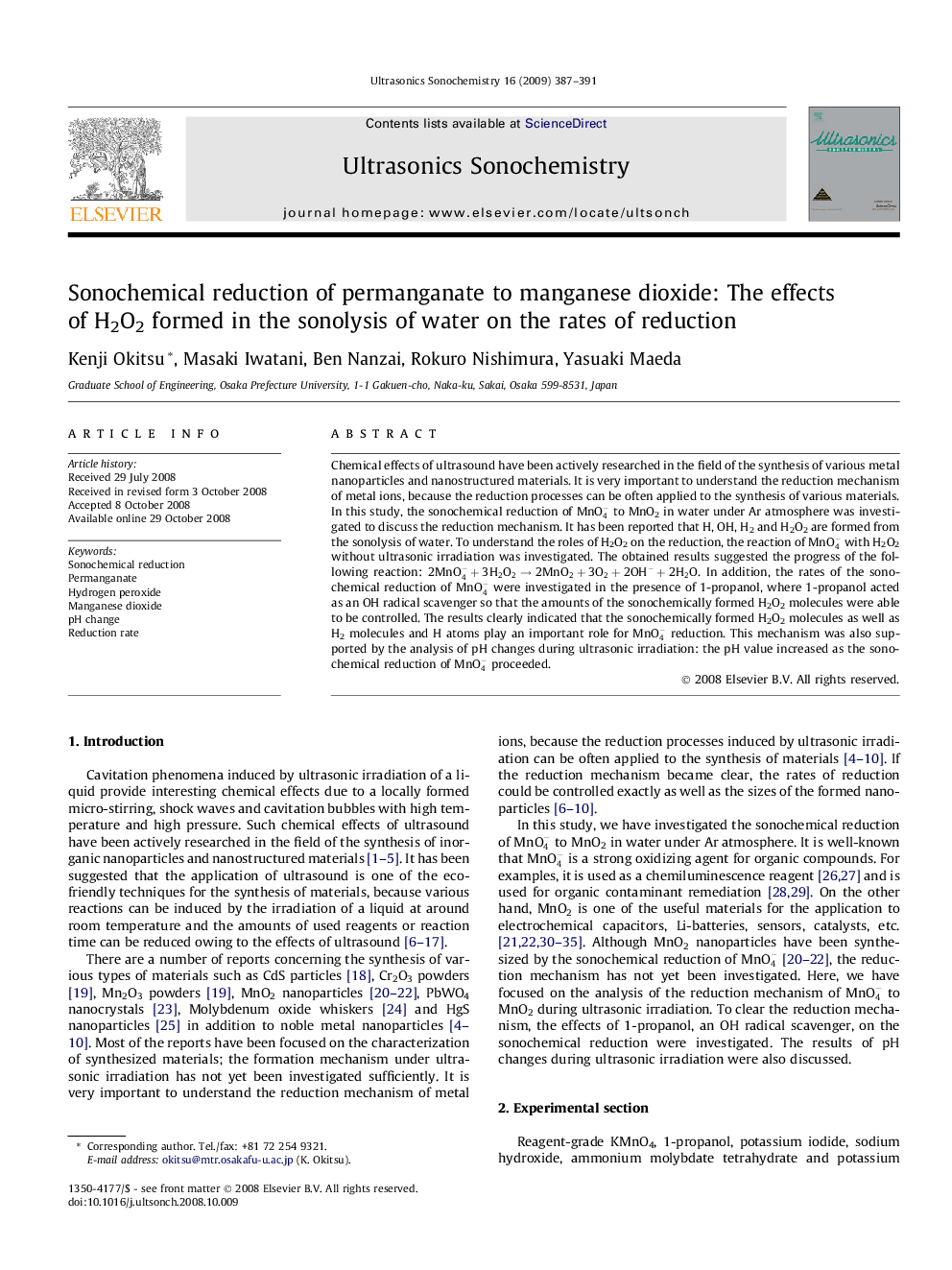| Article ID | Journal | Published Year | Pages | File Type |
|---|---|---|---|---|
| 1265931 | Ultrasonics Sonochemistry | 2009 | 5 Pages |
Chemical effects of ultrasound have been actively researched in the field of the synthesis of various metal nanoparticles and nanostructured materials. It is very important to understand the reduction mechanism of metal ions, because the reduction processes can be often applied to the synthesis of various materials. In this study, the sonochemical reduction of MnO4- to MnO2 in water under Ar atmosphere was investigated to discuss the reduction mechanism. It has been reported that H, OH, H2 and H2O2 are formed from the sonolysis of water. To understand the roles of H2O2 on the reduction, the reaction of MnO4- with H2O2 without ultrasonic irradiation was investigated. The obtained results suggested the progress of the following reaction: 2MnO4-+3H2O2→2MnO2+3O2+2OH-+2H2O. In addition, the rates of the sonochemical reduction of MnO4- were investigated in the presence of 1-propanol, where 1-propanol acted as an OH radical scavenger so that the amounts of the sonochemically formed H2O2 molecules were able to be controlled. The results clearly indicated that the sonochemically formed H2O2 molecules as well as H2 molecules and H atoms play an important role for MnO4- reduction. This mechanism was also supported by the analysis of pH changes during ultrasonic irradiation: the pH value increased as the sonochemical reduction of MnO4- proceeded.
